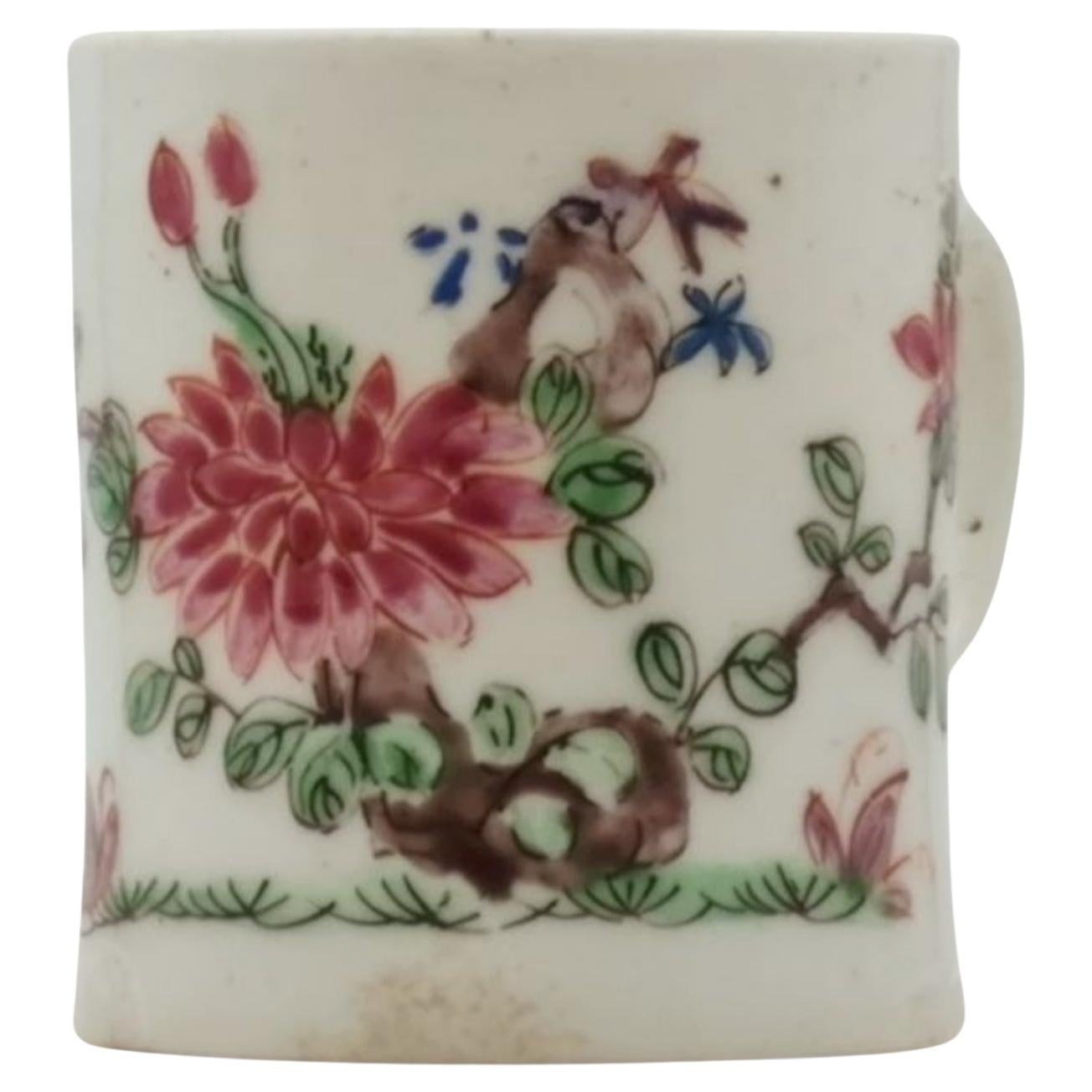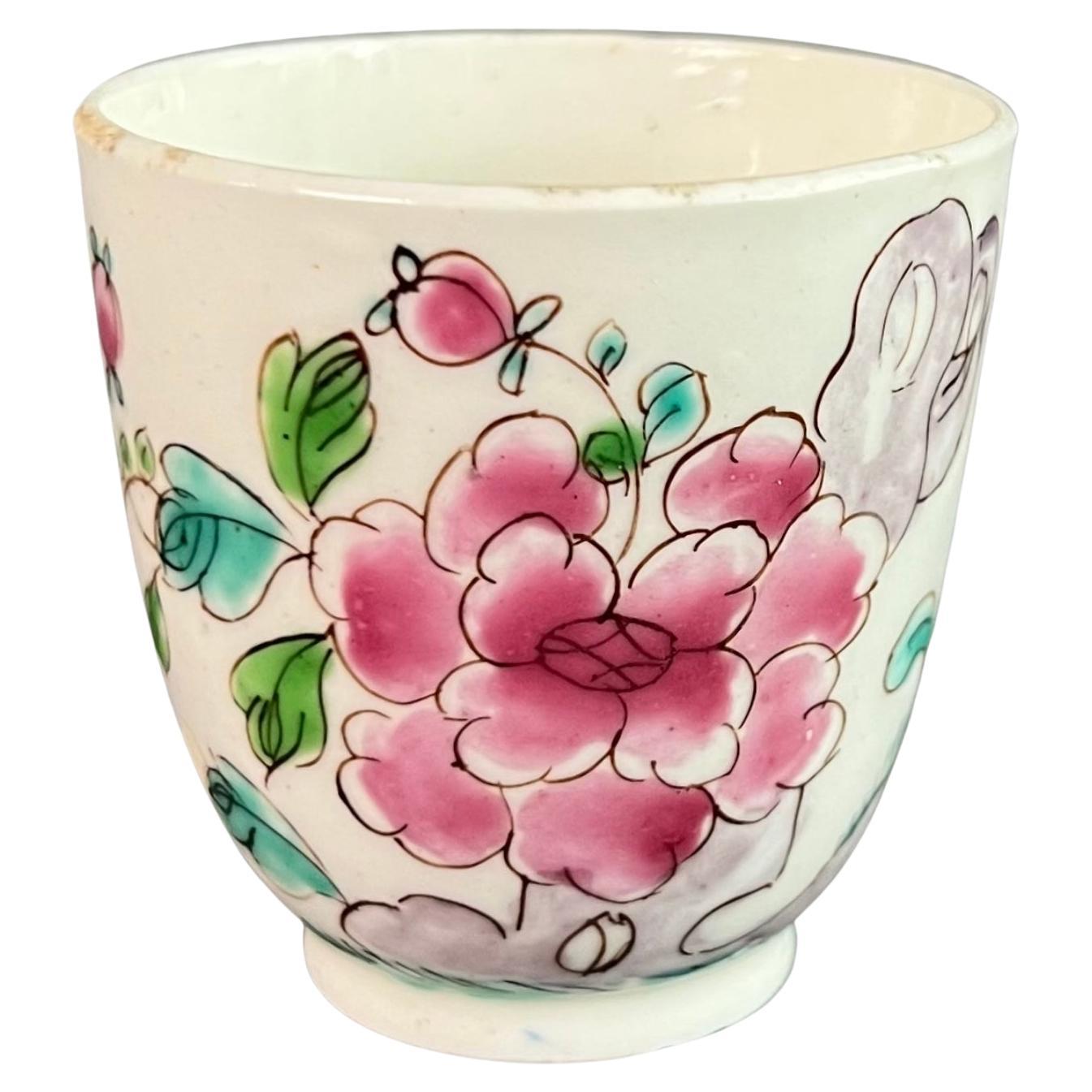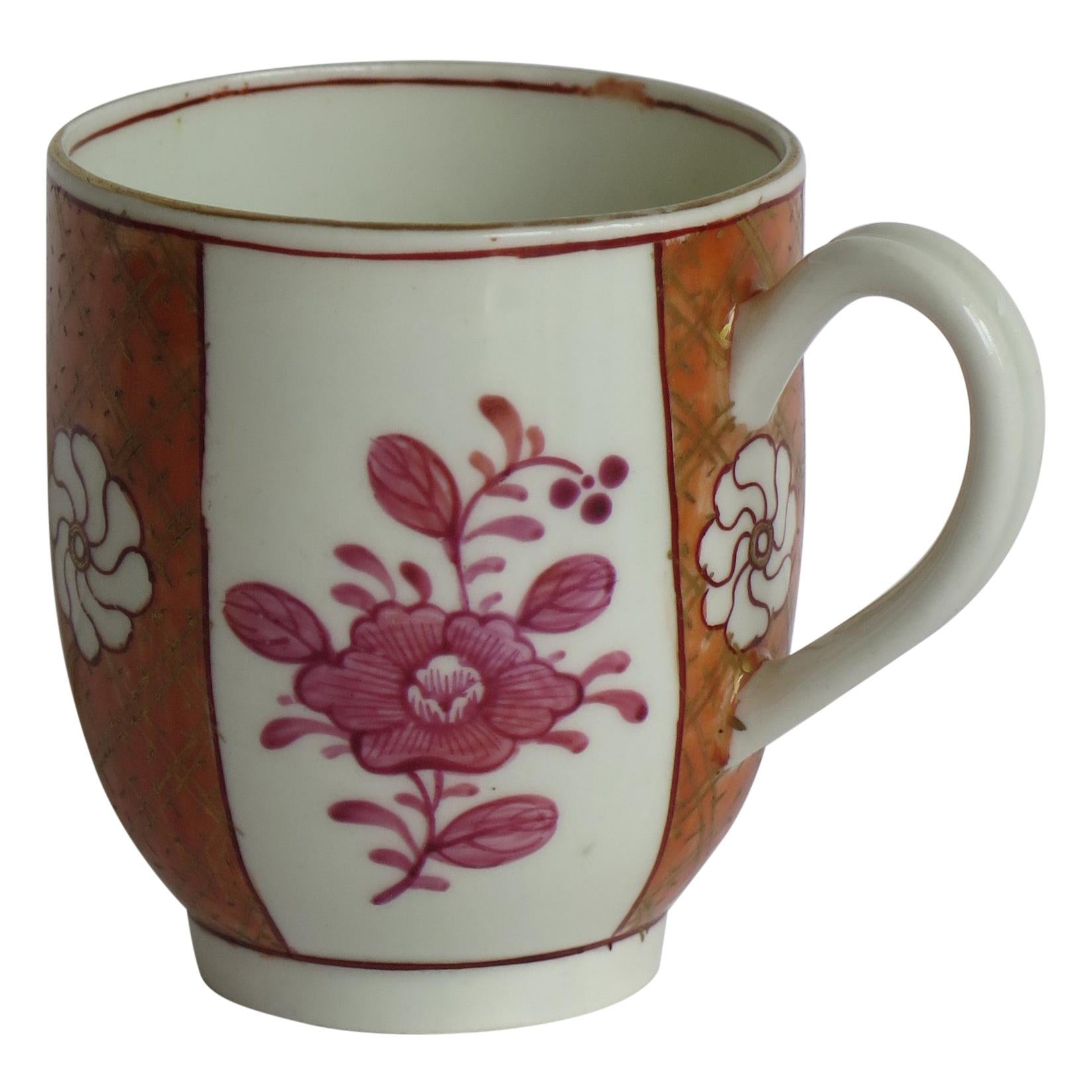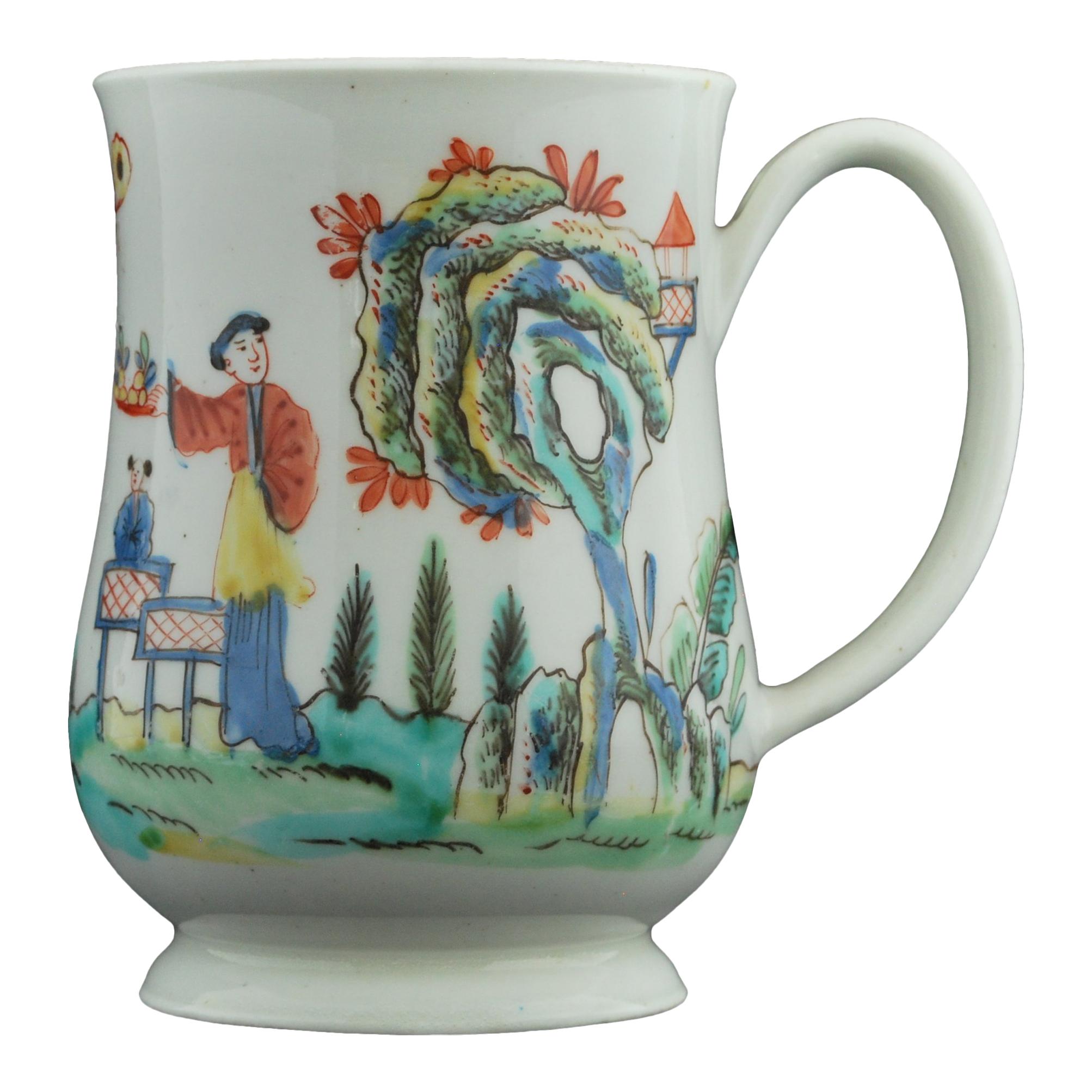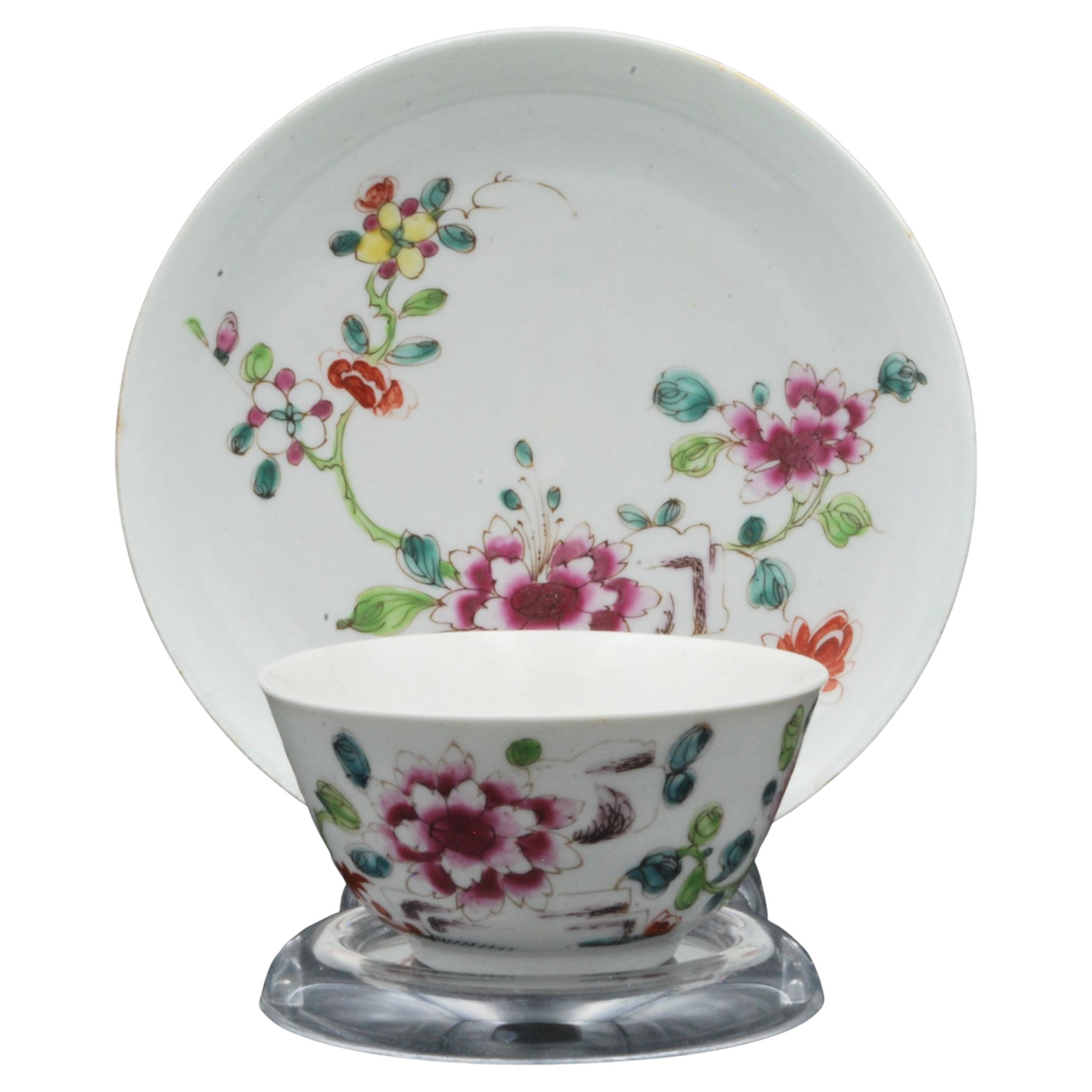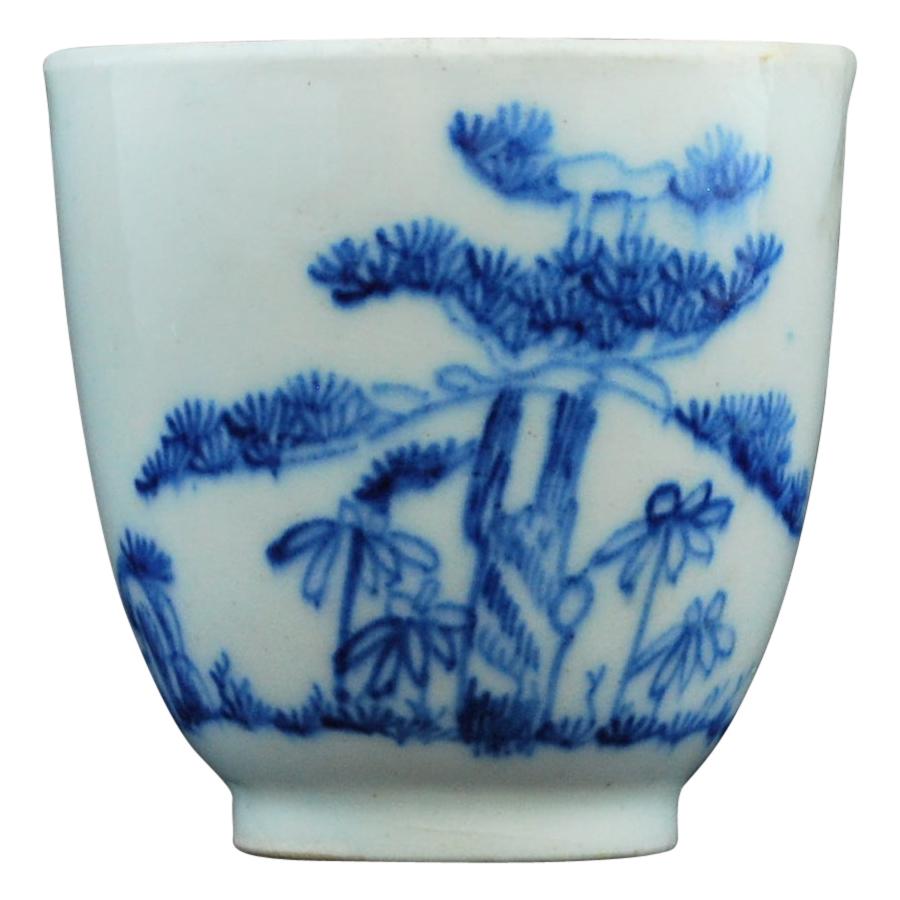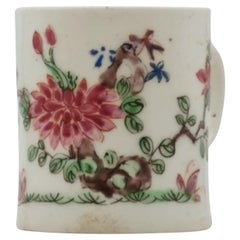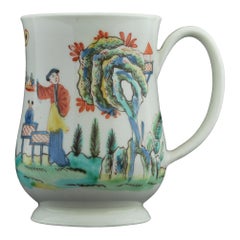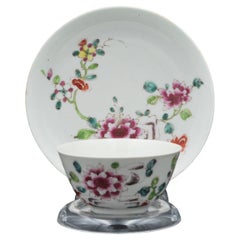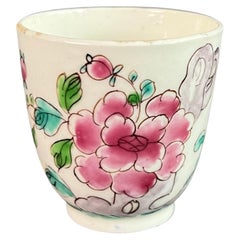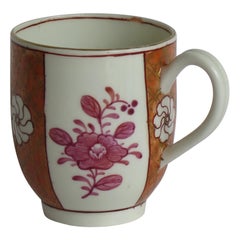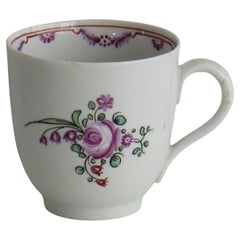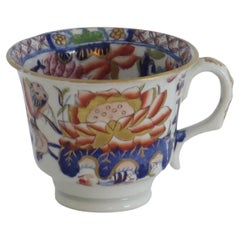Items Similar to Coffee Cup with Famille Rose decoration, Bow Porcelain, circa 1750
Want more images or videos?
Request additional images or videos from the seller
1 of 8
Coffee Cup with Famille Rose decoration, Bow Porcelain, circa 1750
$1,000
£764.55
€880.61
CA$1,401.31
A$1,564.43
CHF 819.74
MX$19,150.12
NOK 10,410.66
SEK 9,815.93
DKK 6,572.09
Shipping
Retrieving quote...The 1stDibs Promise:
Authenticity Guarantee,
Money-Back Guarantee,
24-Hour Cancellation
About the Item
A direct copy of a Chinese shape, decorated with chinoiserie painting of typical motifs in the famille rose palette.
- Creator:Bow Porcelain (Maker)
- Dimensions:Height: 2.25 in (5.72 cm)Diameter: 2 in (5.08 cm)
- Style:Chinoiserie (Of the Period)
- Materials and Techniques:
- Place of Origin:
- Period:
- Date of Manufacture:circa 1750
- Condition:
- Seller Location:Melbourne, AU
- Reference Number:Seller: 43971stDibs: LU3151331863132
About the Seller
5.0
Vetted Professional Seller
Every seller passes strict standards for authenticity and reliability
Established in 2005
1stDibs seller since 2017
79 sales on 1stDibs
Typical response time: <1 hour
- ShippingRetrieving quote...Shipping from: Melbourne, Australia
- Return Policy
Authenticity Guarantee
In the unlikely event there’s an issue with an item’s authenticity, contact us within 1 year for a full refund. DetailsMoney-Back Guarantee
If your item is not as described, is damaged in transit, or does not arrive, contact us within 7 days for a full refund. Details24-Hour Cancellation
You have a 24-hour grace period in which to reconsider your purchase, with no questions asked.Vetted Professional Sellers
Our world-class sellers must adhere to strict standards for service and quality, maintaining the integrity of our listings.Price-Match Guarantee
If you find that a seller listed the same item for a lower price elsewhere, we’ll match it.Trusted Global Delivery
Our best-in-class carrier network provides specialized shipping options worldwide, including custom delivery.More From This Seller
View AllCoffee Can with Famille Rose decoration, Bow Porcelain, circa 1750
By Bow Porcelain
Located in Melbourne, Victoria
A coffee can, decorated with chinoiserie painting of typical motifs in the famille rose palette.
Bow was the first of the English porcelain manufacturers, and produced some excellen...
Category
Antique Mid-18th Century English Chinoiserie Porcelain
Materials
Porcelain
Tankard with Famille Rose Decoration, Bow C5145
By Bow Porcelain
Located in Melbourne, Victoria
Baluster-shaped tankard, decorated with a pattern taken form the Chinese, in the famille rose-verte palette. It is amusing to note how the house on a hill in the original has been me...
Category
Antique Mid-18th Century English Chinoiserie Porcelain
Materials
Porcelain
Famille Rose Tea Bowl & Saucer, Bow Porcelain Factory, circa 1755
By Bow Porcelain
Located in Melbourne, Victoria
A delicate tea-bowl and saucer, decorated after the Chinese in the Famille Rose palette. This style of painting, known as 'wet enamelling', is very attractive but quite scarce in Bow...
Category
Antique Mid-18th Century English Chinoiserie Porcelain
Materials
Porcelain
Coffee Cup, Bow Porcelain Factory, circa 1749
By Bow Porcelain
Located in Melbourne, Victoria
Of Chinese export form with loop handle; the body imaginatively painted in a bright ‘early blue’ underglaze with pine, rock and bamboo after the Chinese. Yellow tinged body; clear gl...
Category
Antique Mid-18th Century English Rococo Porcelain
Materials
Porcelain
Coffee Cup, Kakiemon Decoration, Plymouth, circa 1769
By Plymouth Porcelain Factory 1
Located in Melbourne, Victoria
Coffee cup in hard-paste porcelain, decorated with Kakiemon painting. The fruits of the Plymouth factory are perhaps the first examples of hard-paste porc...
Category
Antique Mid-18th Century English Japonisme Porcelain
Materials
Porcelain
$1,360 Sale Price
20% Off
Baluster Mug, Kakiemon Decoration, Bow Porcelain Factory, circa 1753
By Bow Porcelain
Located in Melbourne, Victoria
Pint mug of baluster form with flared base and grooved strap-handle with heart-shaped termination. The face of the mug painted after the Kakiemon with the two Quail pattern. The reve...
Category
Antique Mid-18th Century English Japonisme Porcelain
Materials
Porcelain
$2,380 Sale Price
30% Off
You May Also Like
Bow Porcelain Orphaned Coffee Cup, Famille Rose Peony, circa 1755
By Bow Porcelain
Located in London, GB
This is a very charming orphaned coffee cup made by the Bow Porcelain factory in about 1755. The cup is decorated in a Chinese "famille rose" peony pattern. This cup would have been part of a large tea service, and the tiny size shows how expensive coffee was in the 18th Century.
The Bow Porcelain Factory was one of the first potteries in Britain to make soft paste porcelain, and most probably the very first to use bone ash, which later got perfected by Josiah Spode to what is now the universally used "bone china". Bow was the main competitor of the Chelsea Porcelain Factory, but where Chelsea made very fine slipcast porcelain, Bow made a different soft paste porcelain that tended to be softer and could be pressed into moulds. Bow served a larger public generally at lower prices. The factory was only in operation between 1743 and 1774, after which the tradition got incorporated into some of the later famous potteries such as Worcester and Derby.
The cup is unmarked, which is normal for Bow items of this era.
Condition report the cup is in excellent condition without any damage or repairs. There are various glazing imperfections, which are quite normal for porcelain of this era.
Antique British porcelain...
Category
Antique 1750s English Rococo Tea Sets
Materials
Porcelain
$472 Sale Price
20% Off
Free Shipping
First Period Worcester Coffee Cup Porcelain Finely Hand Painted, circa 1770
By 1st Period Worcester Dr. Wall
Located in Lincoln, Lincolnshire
This is a rare first period (or Dr. Wall) Worcester Coffee Cup, with a distinctive hand painted pattern, made of porcelain and dating to the 18th century, circa 1770.
The cup is well potted with a grooved loop handle
This delightful early Worcester Cup...
Category
Antique 18th Century English George III Ceramics
Materials
Porcelain
18th Century Newhall Porcelain Coffee Cup Pattern 139, Circa 1790
By New Hall
Located in Lincoln, Lincolnshire
This is a hard paste porcelain coffee cup, by New Hall, dating to the late 18th century George 111rd period, circa 1790.
The piece is well potted on a low foot with a plain loop h...
Category
Antique Late 18th Century English Georgian Ceramics
Materials
Porcelain
Mason's Ironstone Tea Cup Hand Painted in Gilded Water Lily Pattern, circa 1835
By Mason's Ironstone
Located in Lincoln, Lincolnshire
This is a beautiful, early Tea Cup in the highly collected Water Lily pattern, made by Mason's Ironstone, England, circa 1835.
This cup has one of the highly decorative and sought...
Category
Antique Early 19th Century English Chinoiserie Ceramics
Materials
Ironstone
Chinese Export Famille Rose Porcelain Mug
Located in London, by appointment only
A Chinese export famille rose tankard having a straw weave replacement handle and decorated with rocks and flowers of bold design.
China, circa 1750.
Measures: Height 8 in (20 cms).
Category
Antique 1750s Chinese Chinese Export Porcelain
Materials
Porcelain
George 111 Minton Porcelain Coffee Can Hand Painted in Pattern 791, Ca 1805
By Minton
Located in Lincoln, Lincolnshire
This is a finely painted porcelain coffee can made by the Minton factory, England, in the reign of George 111 in the early 19th century, circa 1805
Straight sided coffee cans wer...
Category
Antique Early 19th Century English George III Ceramics
Materials
Porcelain
More Ways To Browse
Antique Chinoiserie Painting
Famille Rose Chinoiserie
Famille Rose Cup
Bow Coffee Cup
Vintage Espresso Set
1810 Cup
China Dinner Service
English Blue And White China
Meissen Cup
Meissen Porcelain Cup
Minton Gilt
Morning Glory Antique
Painted Flower Dessert Plates
Silver Plate Covered Dish
Chinese Covered Bowl
Haviland Limoges France
Meissen Kandler
Meissen With Lid
